Driving along the Via Salaria, you can only spot the belfry of the Church of Santa Maria Extra Moenia marking Antrodoco. This amazing village in the province of Rieti, in the centre of Italy, nestles between the Velino River and the Apennine Mountains.
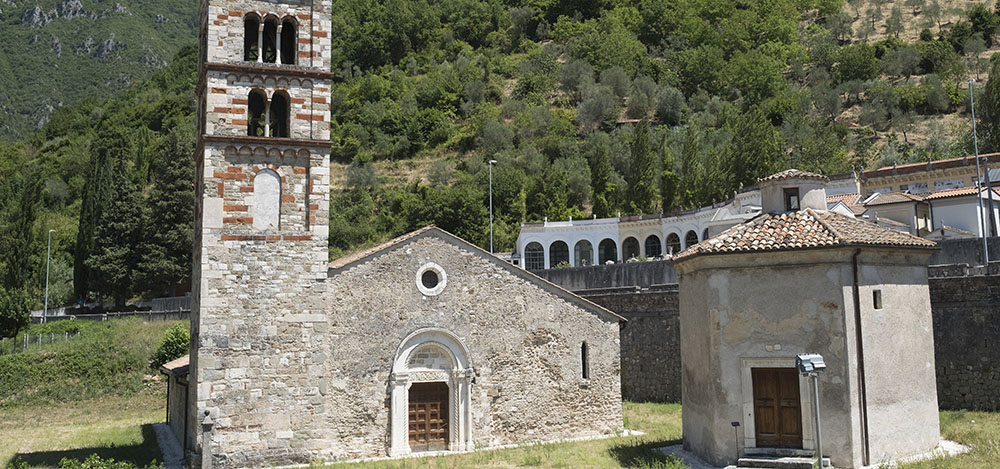
Medieval Church of Antrodoco
Santa Maria Extra Moenia, a remarkable medieval church with a simple gabled façade, was built in the Early Middle Ages over the remains of a pagan temple dedicated to the Goddess Diana. On the apsidal basin, a fifteenth century blessing Christ in an almond supported by angels is depicted. The belfry preserves its internal wooden stairs and galleries.
Separated from the church, stands the nineth century hexagonal Baptistery of San Giovanni Battista. Layout and location are of Lombard tradition and the walls are almost entirely decorated with frescoes from the fifteenth and sixteenth centuries. The Baptistery also serves as a sundial; on June 21 at 5:30 pm, a ray of sunshine penetrates through a small window, announcing the Summer Solstice.
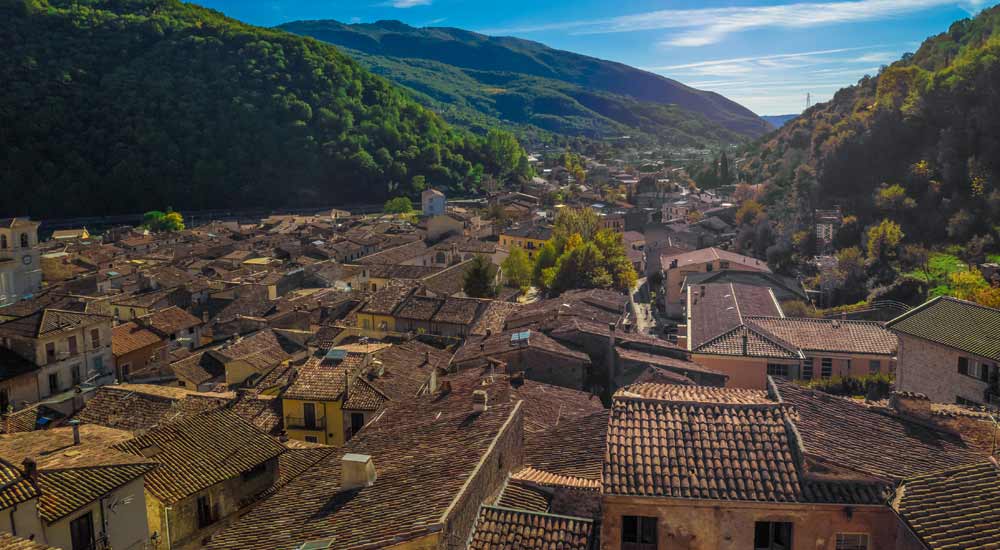
A network of paved streets leads to Piazza del Popolo, enriched in 1875 with Palazzo Pallini, which hosts a residence, a distillery and a shop adorned with Art Nouveau friezes and writings. Here the mistrà is produced, a dry anise and fennel spirit. Nicola Pallini chose to establish his liqueur company in Antrodoco, making the town an important commercial hub.
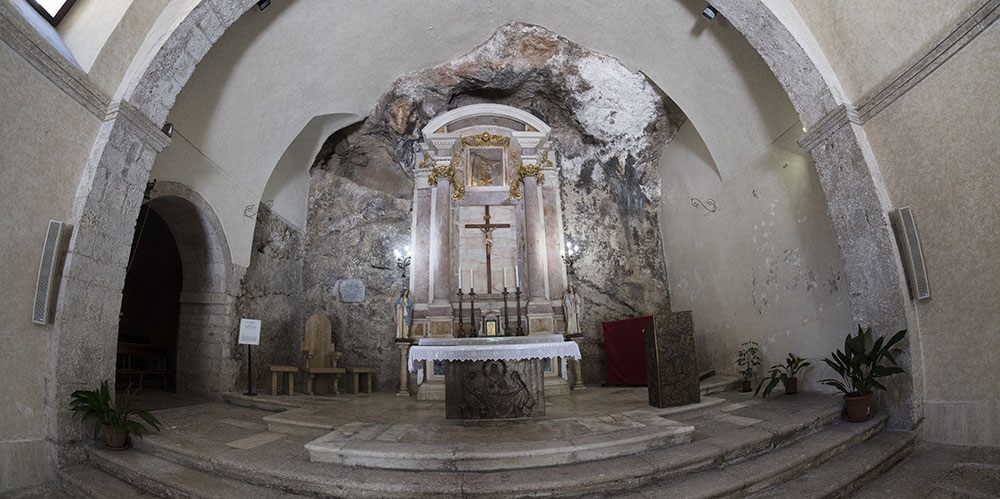
Sanctuary of the Madonna delle Grotte in Antrodoco
The Sanctuary of the Madonna delle Grotte, on the Gorges of Antrodoco, is said to date back to the early 1600s, after the discovery by a shepherd girl, Berardina Boccacci, in 1601, of a sacred image of the Virgin with Infant Christ in her Arms. On the stone façade, a Baroque portal is surmounted by the coat of arms of Bishop Gaspare Pasquali, who completed the construction. The single nave church still preserves its wooden truss covering. Moreover, the crypt houses the remains of the French soldiers who died during the Peasant Riots of 1799 in the Bourbon Kingdom.
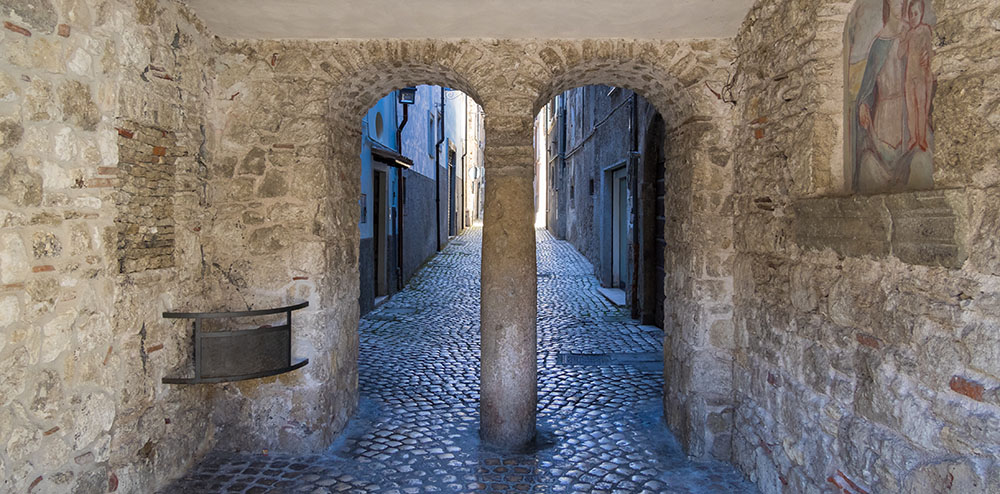
The Museo Storico Militare, the pride of Antrodoco, displays over 300 headdresses and relics of the World and Colonial Wars, such as weapons, uniforms, bombs, and even a perfectly equipped basecamp. Also worthwhile is a visit to the many handicraft shops, displaying exquisite handmade items, including iron articles, and traditional lace embroidery.
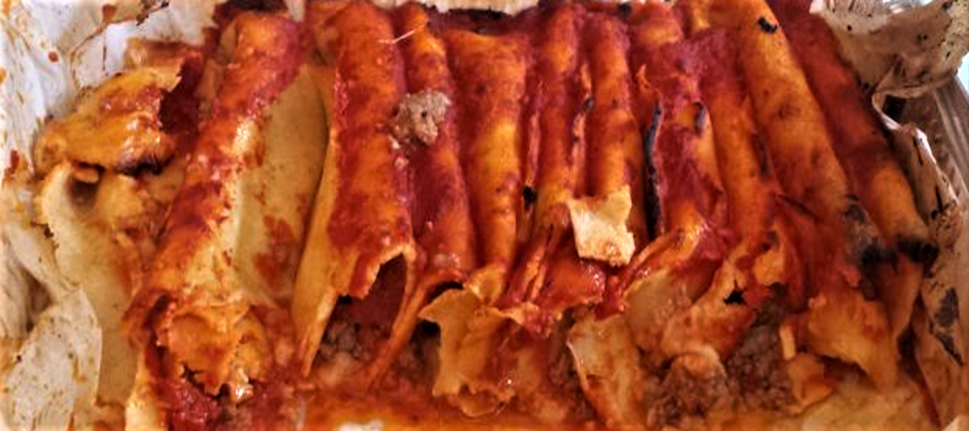
The stracci from Antrodoco
“Stracci oh, stracci ah, so davero ‘na bontà, stracci oh, stracci ah, te fau propiu reffiatà” (The Stracci are such a delicacy…that they make you heave a breath of delight).
This is the slogan that, in early August, attracts gourmands to the Festival of the Stracci Antrodocani. Their recipe dates back to 1300, but tomato, previously non-existent, was only added in 1700. The dish consists of very thin and elastic oven baked crepes, made with eggs, water and flour, and filled with tomato, minced veal, mozzarella, butter, beef sauce and grated parmesan. This speciality was called Stracci (Rags) just because of its softness. Typical products of Antrodoco are the Sabina DOP extra virgin olive oil and the local high-quality meat.
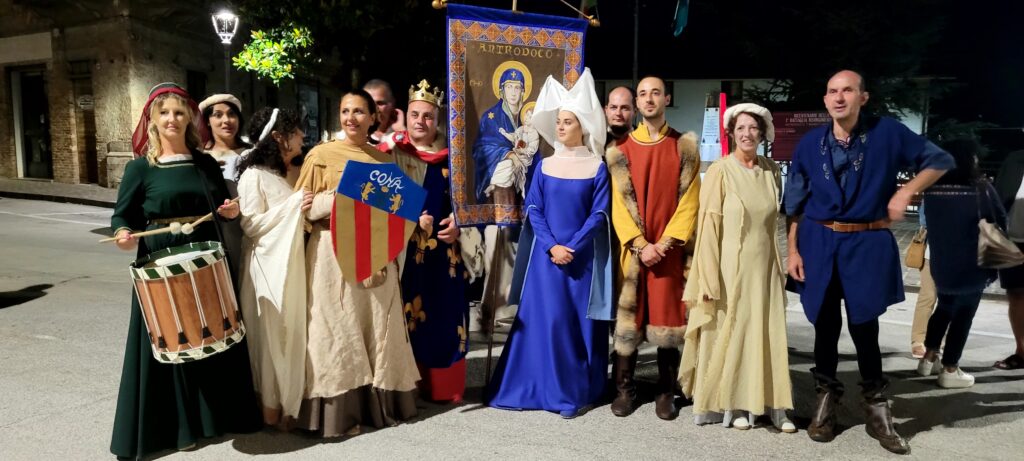
Castaldato Interocrino in Antrodoco – Facebook photo @castaldato
The Gastaldate of Interocrium, the Antrodoco ancient name meaning “among the mountains”, is a historical re-enactment recalling the magical medieval atmosphere of the episodes occurred in the village between 1228 and 1371. The event, celebrated from mid-June until September, includes the Procession of the Ladies, the Banquet of the Districts, the Night of the Drums, the Historical Parade, and the long-awaited tournament “Palio Madonna del Popolo”.
The Hostel “Il Castagno” is run by young people under thirty, who renovated the abandoned Forest Service headquarters and equipped the lively coloured rooms with furniture from grandma’s attic, with a touch of design. Thus, a cosy welcoming place is born, a pulsating heart of countless activities for the young.
